The Article
R-N602 From Yamaha: On The Receiving End
19th October 2016
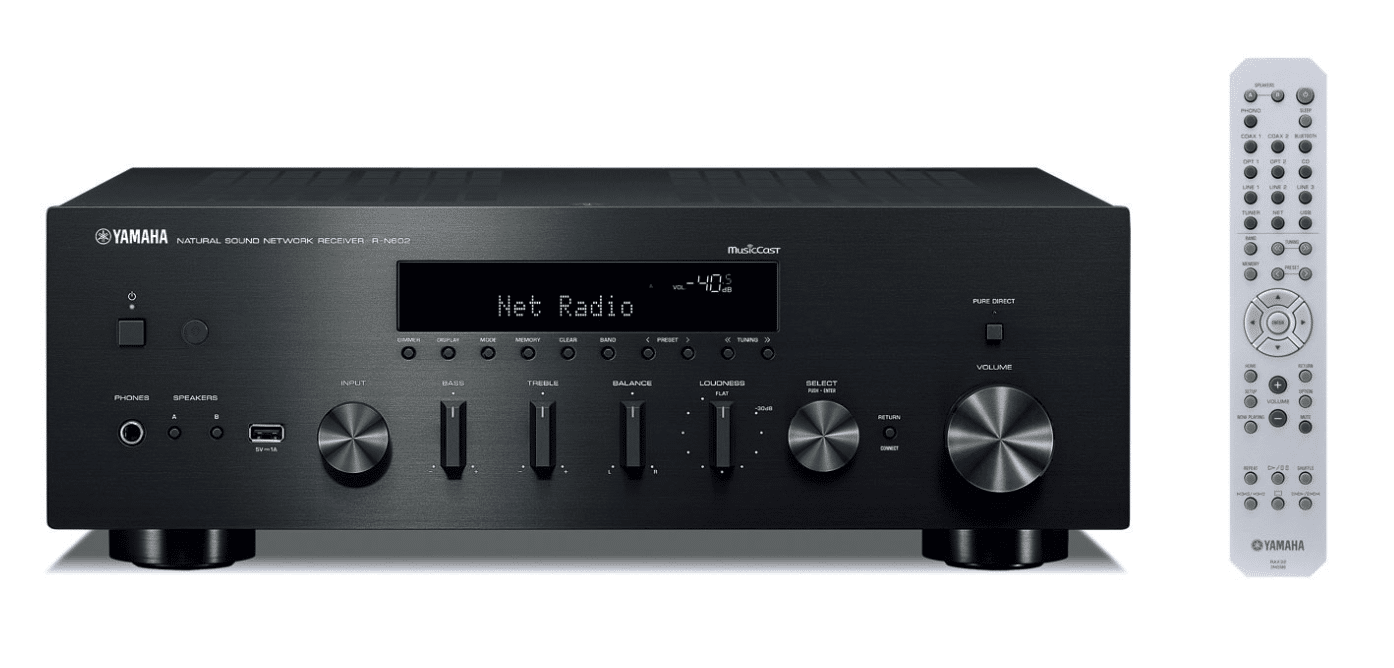
Sporting a retro amplifier design but packing in numerous digital and networking facilities, Paul Rigby reviews Yamaha’s budget receiver, the R-N602
It’s big, it’s meaty, it’s got buttons and switches and knobs and it’s shiny (silver) or its so dark that light falls into it (black, what else?) and you could put caterpillar tracks underneath it and invade a small neighbouring country without a shot being fired because the populous would run away from it, hands in the air, screaming hysterically. This is Yamaha going back to its 70s roots. You don’t look horizontally at the R-N602, you walk up to it, pause, then you lift your head slowly and see if you can make out the summit…somewhere in the clouds.
You also don’t turn on a 115W R-N602 via the on/off button, you send it a letter of introduction and then wait for permission.
While doing so, you can note that the R-N602 is designed to be used as part of Yamaha’s MusicCast network audio system that allows you to use all your MusicCast products together or separately, controlled from one app which, of course, also means popular streaming services (where applicable in supporting countries) such as vTuner internet radio, Pandora, Rhapsody, Spotify, SiriusXM, Napster and Juke. On the networking subject, the ‘Yammie’ also supports AirPlay, DLNA plus Digital Blocking (an iPod’s direct signal is sought feeding the Yamaha’s own DAC). An ECO mode reduces power by 20%, you have access to Bluetooth, Wi-Fi plus a Pure Direct button to bypass the majority of the amp’s electronics to enhance sound quality.
In terms of files support, the Yamaha supports 5.6MHz DSD and AIFF 24bit/192kHz, WAV/FLAC 24bit/192kHz plus the usual suspects via a Burr Brown DAC. There’s also a FM/AM tuner, speaker terminals for two systems and, oh yes, the ability to plug a turntable directly into the box because you get a phono amp, built-in. More about that later. Other sockets around the back, apart from plentiful source RCA-based connectors, include two opticals, two coaxial, a wireless port for a screw-in aerial plus the ability to connect Ethernet and a subwoofer.
IN USE
It’s bulky, retro and clunky. In fact, the hefty and expansive Yamaha glories in its retro clunkiness. It comes at you, arms open with that certain ‘look at me!’ exclamation as it displays hulking great knobs that control those old classic controls: treble, bass, balance and, don’t forget that old favourite, ‘loudness’, sitting next to more modern additions such as the USB source socket. Some might question the inclusion of such controls and I would agree that the treble/bass/balance/loudness quartet are worse than useless. That said, the Pure Direct removes any criticism because it allows the sound signal to skip right past them. Hence, their inclusion could be seen as ‘a bit of fun’. In these design terms and for this price…sure. Why not? The target audience, many of which will be maturing beginners with hi-fi experience that relates to their parents old system, may even see the inclusion of such controls as a comforting familiarity.
SOUND QUALITY
I began by spinning Buffalo Springfield’s For what It’s Worth (1966) on the Leema Elements CD Player. Three things hit me immediately. Firstly, the bass was very strong and punchy. Yamaha likes its lower frequencies and the performance here maintains the house sound which means that this track offered excellent bass force and foundation. The song was driven throughout with a strong rhythmic drive that gave the track an enhanced sense of pace.
There was a lack of engagement, though. By that, I means that the soundstage did sound a little stark. It was almost as if the guys played in a studio that was, by day, an operating theatre. There was a slight lack of soul and musicality in the R-N602s presentation so that the drums never really connected with the guitars or the emotional vocals. Then I noticed that the Pure Direct button had not been engaged. Turning this feature on bypassed much of the amp to provide a more direct sonic pathway. This improved the sound quality immeasurably, giving the vocals a more, well, human quality with delicate textures from the vocal chords more in evident while the guitars offered greater grit and involvement. Despite the good news, though, a certain analytical edge remained but the effect was greatly reduced in Pure Direct mode.
The sense of clarity from the upper midrange and treble enhanced the tonality of the music while there was tremendous instrumental separation around the soundstage so the band sounded relaxed and at ease with their playing. There was never any sense of tension. The air and space exhibited also gave the frequencies time to decay properly which enhanced the performance of these organic instruments, increasing detail.
These days, I only tend to handle MP3 files with rubber gloves and a pair of forceps but playing Kylie Minogue’s All the Lovers from her Abbey Road Sessions album in this execrable sound format sounded half decent via my Apple iPhone 6S over Bluetooth. There was plenty of room to be had while midrange and bass existed in an admirably balanced manner. Strings were thin and nasty, yes while Minogue’s vocals made her sound like she had a pinched face (I imagined her as the green-faced witch in the film, The Wizard of Oz, MP3s made Kylie sound just like that) but, even given the lack of musical data, the Yamaha performed tremendously to give you the best performance it could. As if the amp was exclaiming, “Look, guv, I haven’t got much to work with here…but this is the best I could do.” I’ve heard a lot worse, even via equipment price higher than this receiver.
Using a USB stick, I played the DSD version of the Allegro for Bach’s Concerto for Harpsichord, Flute and Violin via the front loading USB port and was pleased to hear the relatively spacious digital performance of the R-N602 continue here. Strings and the wind section did sound a little thin and slightly forced, though, even at this high resolution. The performance basically allied itself to the earlier CD tests, in this respect. That said, there was much to admire with the informative nature of the track giving this textured and detail arrangement time to manoeuvre while allowing complex instruments such as the harpsichord a chance to express itself.
Up until now, we had a reasonable digital power house that looked great on paper but offered no more than a ‘credible’ performance in reality.
Then something wonderful happened.
I wanted to test the internal phono amp of the Yamaha. At this price, it is more likely that users will be utilising the internal module and not spending out for an external phono amplifier. Pushing an analogue signal through this unit was fascinating because the results were surprisingly good. The slightly sparse nature of the presentation combined with the epic quality of the phono amp and the warmth of the basic vinyl signal to provide a big, bold, open and grand musical return. Trumpets sounded clear and brassy without a hint of stridency or brightness, saxophones were reedy and emotive, vocals offered a precision and enhanced diction and bass was firm, fast and informative. This heady mixture was quite a sonic revelation for the price!
CONCLUSION
The Yamaha R-N602 offers plenty of value for the money and a wide array of features with an appealing retro design. Despite the slightly constricted digital response in CD and general digital file terms, I was blown away by the analogue play and can whole heartily recommend this amplifier if you are looking for an amplifier to act as the heart to your vinyl hi-fi system.
In fact, I would go further than that and advise you not to look at this box as a multimedia receiver at all. Me? I would not buy it for its digital features. I would turn the feature list on its head. I would see this product as the amp section of a new vinyl system with plenty of bonus digital features added on because even if you saw the Yamaha as nothing else but a vinyl-based amplifier, it would still be good value. Anyone looking to set up a budget vinyl system really needs to place this box on their demo list and pronto.
YAMAHA R-N602 RECEIVER
Price: £339
Web: uk.yamaha.com/en
Tel: 01908 366700
For more specifications, click HERE
GOOD: Pure Direct mode engaged, open and natural phono output, feature count, Bluetooth, price
BAD: Pure Direct Mode disengaged, digital playback
RATING: 7
REFERENCE SYSTEM
Rega RP3 turntable
Leema Elements CD Player
Rega Brio-R amplifier
Spender S3/5R2 speakers
Chord Shawline cables

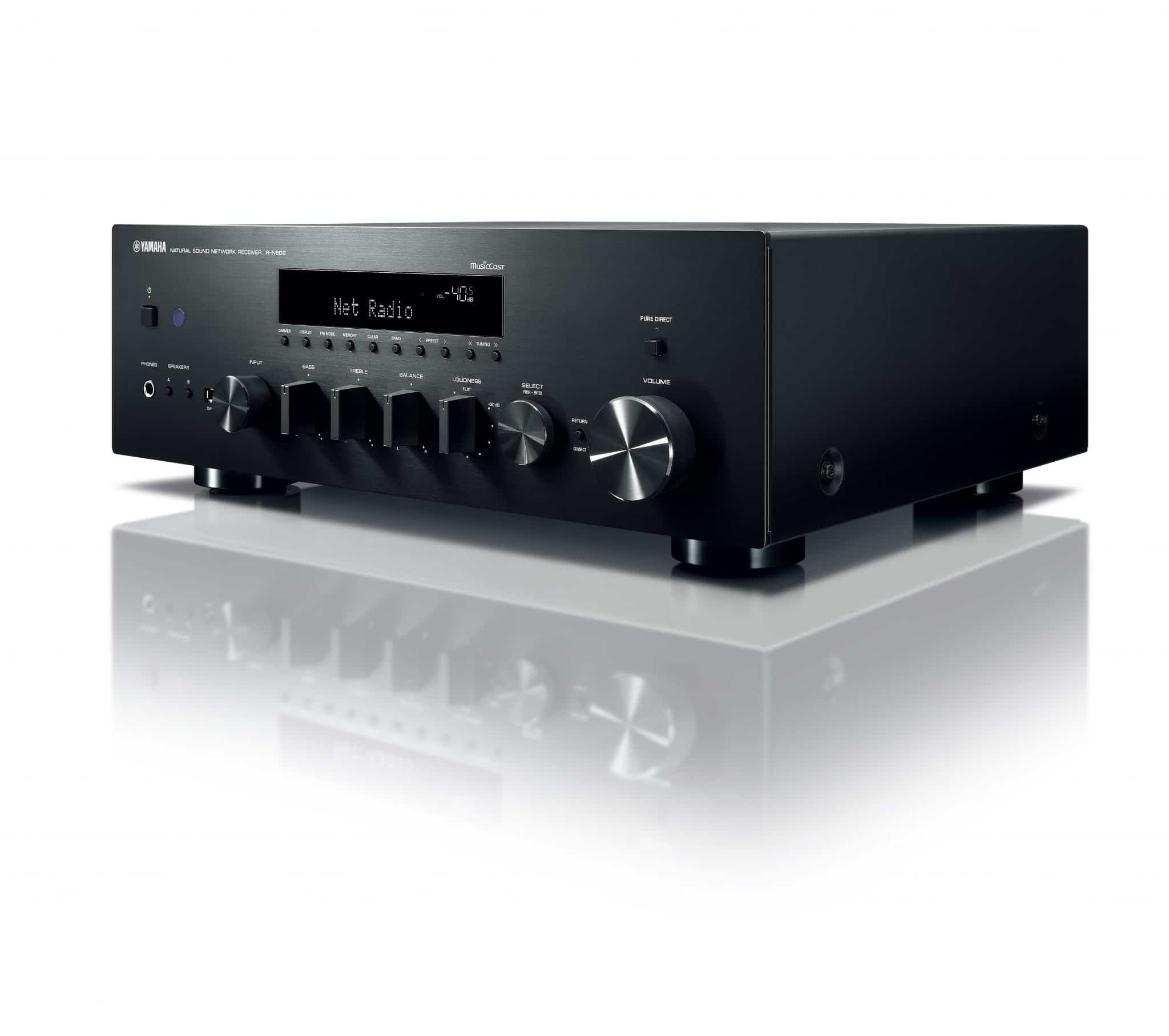
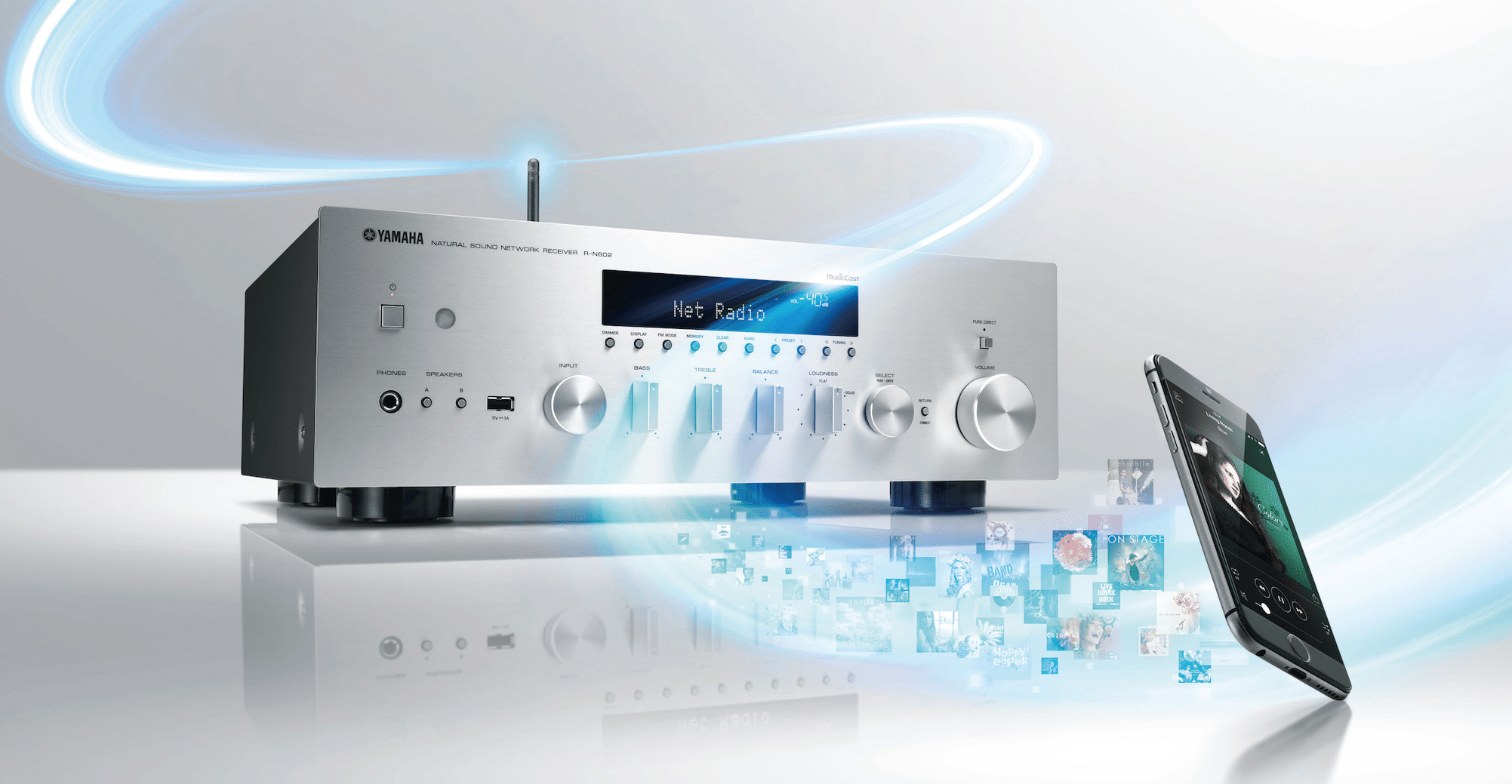
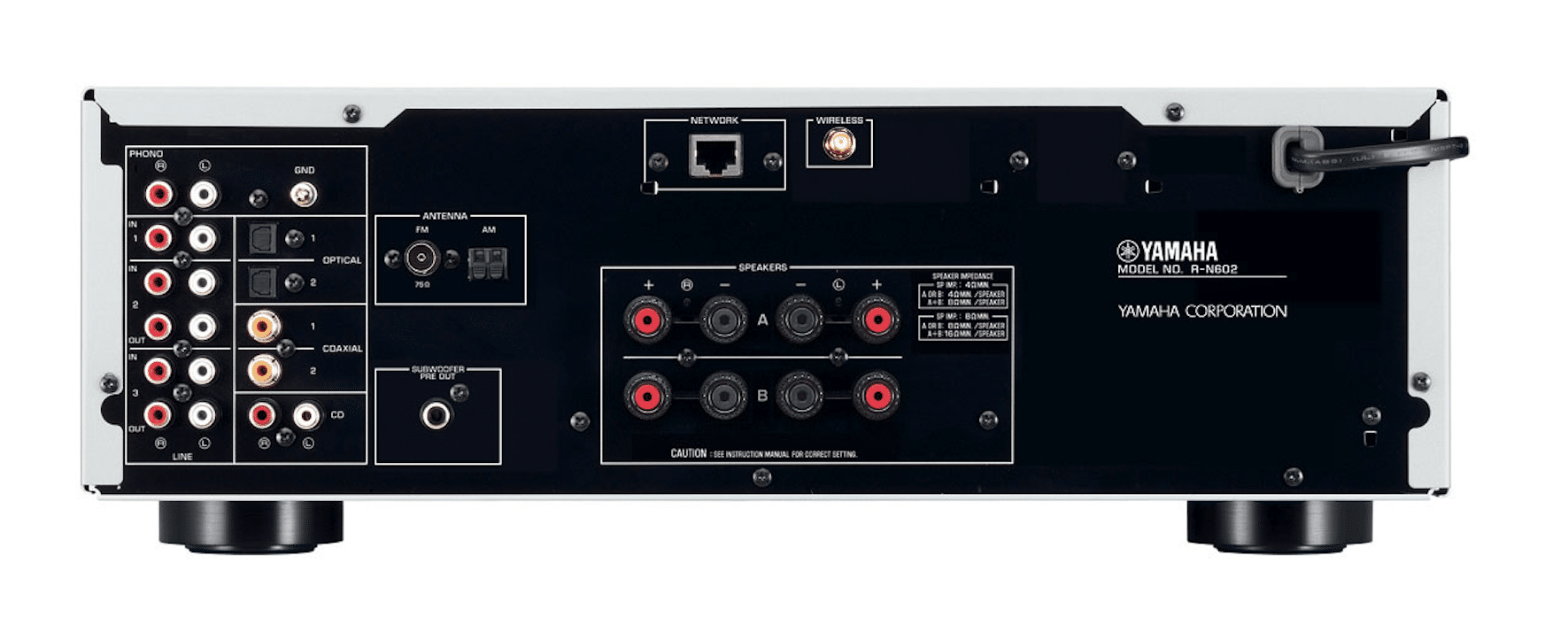
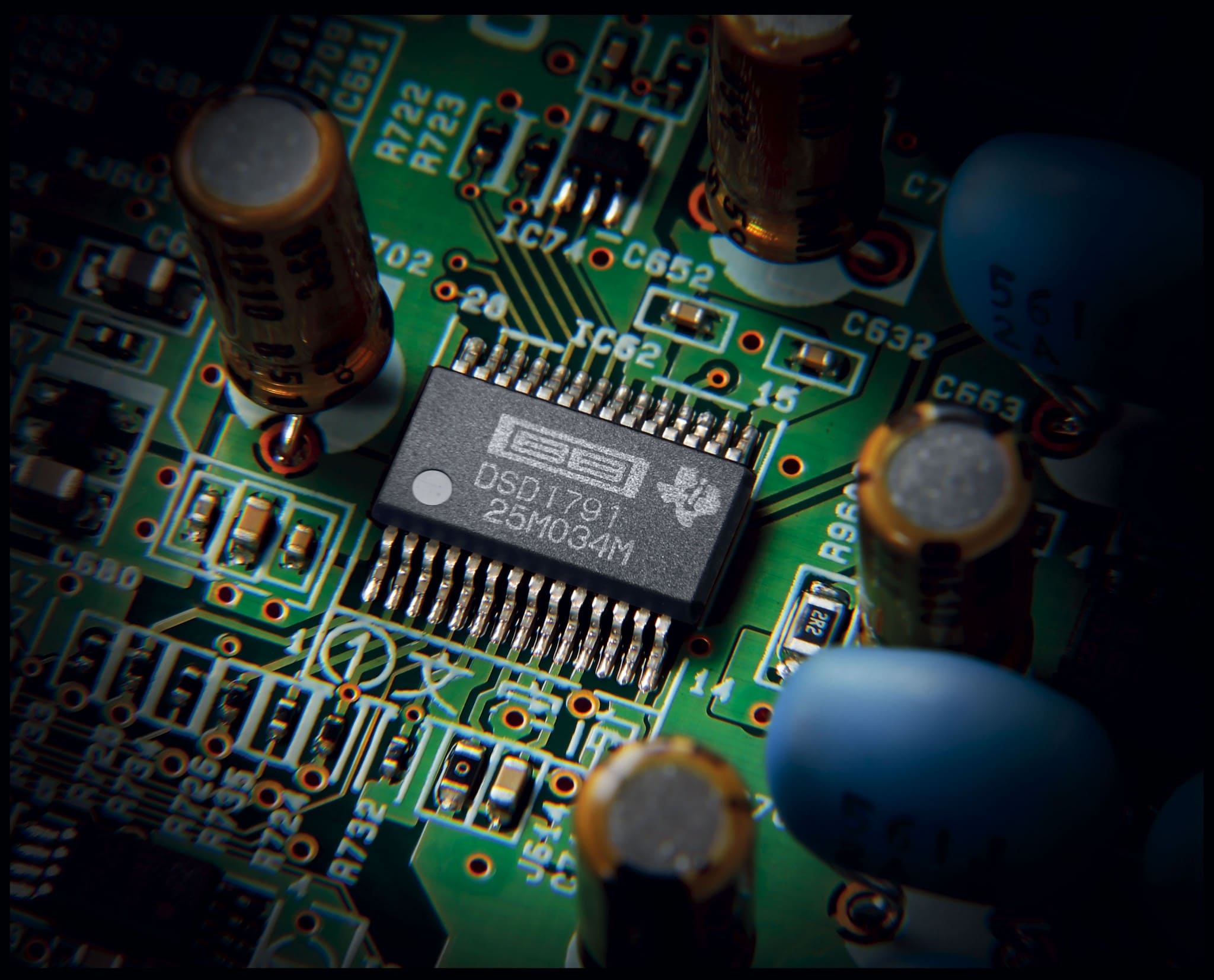
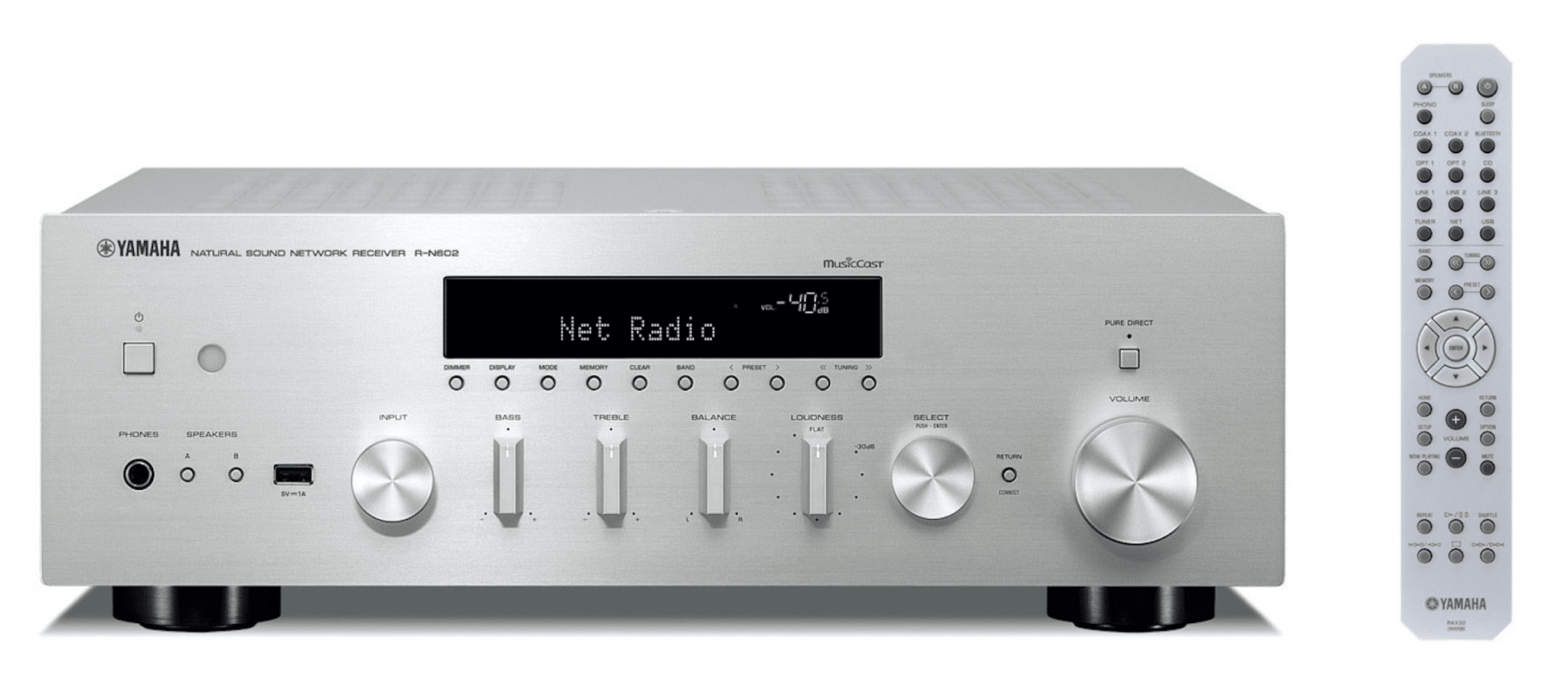


You suggest more like an av receiver over a dedicated 2 ch? I am not interest in home theater at all….
The internet radio (which seemed to be a priority judging by your question) is the problem here and finding a 2 channel with that built in is an issue at this price. There are all-in-one 2-channel products out there with internet radio but they are much more expensive. AV units do provide this feature at a lower price.
What you can do is go one of two ways, and I’ll provide a sample product to illustrate those ways. You can buy a 2-channel amp with Bluetooth built in and then send internet radio to it from a portable device like a tablet or phone. This Cyrus, for example, offers superb sound quality with Bluetooth to do that: https://theaudiophileman.com/cyrus-one-2/
That will give you quality sound, superior to the Yamaha.
Not as good quality in terms of sound but a better feature set, is the the Yamaha R-N803D which will provide a host of music services (plus DAB radio built in) but, again, you’ll need to send the internet radio to it from another device.
There are other brands, of course, which you might prefer but this is the basic choice. Great sound, lousy feature set or superb feature set, not quite so good sound (but still decent, of course – I’m not denigrating the Yamaha sound at all).
Hi LEFTERIS,
What did you choose?
I also looking for best speakers for R-N602. I read that the combination with Klipsch it’s not one of the best
Thank u very much!!!!!
No problem, I hope I’ve been able to help, Lefteris.
Thank You Paul for your excellent review and feedback re the comment section. All of which have been very useful,
It would be brilliant if you could assist with my query please ;
I recently purchased a Marantz PM 6006 amp and a set of Q Acoustics speakers.
I have an old pair of Technics 1210s record players which I have connected to a mixer and I would like play my music to a connected wireless system such as musiccast.
I don’t want to replace my current system so wondering if I could use the Yamaha N602 solely as a digital receiver and not as an amp. ie use it to take my music onto the musiccast network while still using my current vinyl player, amp and speakers. Is this the best solution or is there an alternative?
Thank you for your guidance,
Hi Paul – thanks for your comments and question. Just to clarify then – all you’re looking for is a way of adding MusicCast to your current set-up?
Hi Paul, i’m currently replacing my aging stereo system, and i’m divided by the Yamaha R-N602 and the pricier Yamaha RN803D, which costs around 200 euros more. Can you tell me if the price difference is justifiable? Do you think the sound quality, which is my main criteria, is much different? Thank you!
Hi Joao – well, that depends on what you’re using it for. Do you also use it with your TV or is it exclusively for stereo? What facilities do you require? What are your priorities?
Hi Paul, thanks for the quick reply! I’m using it mainly for music playing (CD, Spotify, FM and internet radio). TV is secondary, as vinyl, but will be used also. So, my main priority is sound quality alongside the streaming use. I’m not planning in reproducing digital files, just my CD collection Spotify and radio. Thanks for your support.
Can you list the rest of your hi-fi please, Joao?
I have a NAD C740 stereo amplifier, with a Sony CD Player CDP-XB720. The speakers are B&W DM 602 S2. (I am considering upgrading the speakers too). Thanks a lot
Hi Joao – I would advise keeping hold of the speakers for now and concentrating upon the sources. The sources are where the detail is to be found and presented. Any detail lost here will not magically reappear later merely because the speakers have been upgraded. On that basis, I would look to upgrade as many sources as possible. That includes the CD player.
At this price point, if you want Spotify and Internet radio then a receiver is a good bet. Both of the Yamahas you list are good but look closely at Onkyo too which feature very good amplifier stages.
Ok, actually i was not considering to upgrade the CD Player at all, but now you got me thinking…can you recommend one that will definitely make a difference? And my original question: Do the 200 euros that the Yamaha RN803D cost more than the R-N602 pay up? Thanks
Hi Joao – I have to review the 803 but it appears to offer a better power supply and improved DAC. On the face of it, without listening to it, it appears to offer improvements. In terms of the Cd player, what would be your budget?
My budget is somewhere between 200 and 300€. Oh, and i mostly listen to alternative and indie rock music. Thanks
Hi Joao – I would take a close look at the Mitchell & Johnson CDD201V : http://mitchellandjohnson.com/cdd201v-cd-player/
Hi Paul. Have you reviewed the Onkyo TX-8250? Judging by it’s features and specifications, it’s a good alternative to both the Yamaha’s i was considering.
I’m afraid I have not, sorry Joao. What I can say is that I’ve reviewed a few Onkyo products in the past and each and every one had a surprisingly good amplifier stage. I did one group test for HiFi World magazine a few years ago now that included a host of specialist 2-channel amps and the Onkyo performed very well against them. It wasn’t the best but it wan’t the worst either.
Hi Paul,
thank you for your review. Based partly on your review (thank you) and partly on my 30 something years living happily with my Yamaha A720, I bought a R-N602 when my old amp died. Also factored into my decision was the fact that the R-N602 connected to the Internet. I can’t make mine connect to the Internet. I use a Samsung S7 Android phone as a hotspot and can connect all manner of things to the Internet via this method, but I’m blowed if I can make the R-N602 connect to the Internet.
If you can help me in this I’ll be eternally grateful.
Thanks
Kit
A wired connection is preferable, Kit. Is that a possibility? Then you take a cable from the network port on the rear of the chassis to your router and that connects you immediately. Even if that’s an impossibility during normal everyday play, take your Yamaha to the router for now, hook it up and update your software to the latest version, that might possibly be an issue. I think that’s covered on p.50 in the manual.
Failing that, have you connected the wireless antenna? Have you screwed it in all the way and then pointed the antenna upwards (too much force can damage it, by the way)? Changing the angle from the vertical (if the signal is not the strongest) might help as might locating the Yamaha in different places (the signal might be being blocked by a shelf, for example).
I have to apologise for not having all of the Android info to hand because I tested the machine via iPhone. I didn’t connect my iPhone via a mobile hotspot but directly via Wi-Fi and, I think (the review was a while back now, memories fade) the app. Have you look at p.19 of the manual? That might provide more answers for your particular phone.
I hope that lot will be of some help. IF not, Yamaha’s technical support is available via 0344 811 1116.
Hi Paul, Thanks for the great review! I’ve resurrected my old Sansui SR-222 turntable and am looking for a receiver with a good phono amp. I’ll take this one I think after reading your words.
Thanks again!
Alistair
No problem, Alistair – glad I could be of help.
Hi Paul. Nice review you wrote! As I am looking for a new stereo amplifier, I wonder if the Yamaha R-N602 is the best choice for me.
I have Dali Zensor 7 floor standing speakers and listen far most of the time to (internet)radio and (hi-res) Spotify songs. Sound quality is most important, next to some digital inputs. WiFi streaming can be done trough an external Chromecast Audio is my opinion, or am I wrong here?
My budget is 700 euros, but willing to spend up to 1100 euros if the sound quality is significantly higher and matches my speaker better.
I hope you can help me. Best regards, Tijs
Hi Tijs Рthanks for your question. You might want to think out of the box a little, if you have that sort of cash. For example, £750 will buy you a Quad Vena II Deluxe. Excellent sound quality with internal Bluetooth. Just send Spotify and Internet radio to it via your phone or tablet. You can do the same with the Cyrus One HD that features DAC for £1,000. And yes, alternatively, Chromecast Audio is a valid option. The latter also means that you can also look at the Rega Brio and Heed Elixir. All are ideal options.
I have a Yamaha R-N602. I have a pair of Elac Uni-Fi UB5’s and a pair of Buchardt s400’s. Both are 4ohm speakers. Can I hook up both pairs and play them at the same time thereby giving me a broader sound stage? Thanks
The Yamaha will only play one set at a time Glen. You may need to go surround sound for that sort of coverage. A dedicated receiver is maybe what you’re looking for?
Hi Paul,
I have a dilemma; i was at the point of getting the Quad Artera Solus as a networked update for my 20 year old 34/306 but then have seen the Yamaha R-N803 which for a quarter of the price does everything including wi-fi (but not CD). i could, by getting the Yamaha, afford to buy a pair of Linn Majik 140s as a replacement for my old Castle Pembroke floorstanders. Would i be doing myself a disservice with the Yamaha as opposed to the Quad? I want quality streaming going forward alongside vinyl.
Perplexed of London (Chris)
Hi Chris, in a word: yes. You would be doing yourself a disservice. The Quad, if you can afford it, will reward you with superior sonics. There’s a reason it is more expensive than that Yamaha and that’s down to the quality of the featured components.
Thanks Paul,
I thought so! Out of interest do you happen to know whether the Majik 140s would be a suitable match for the Quad?
Yep – I think they should match well Chris.